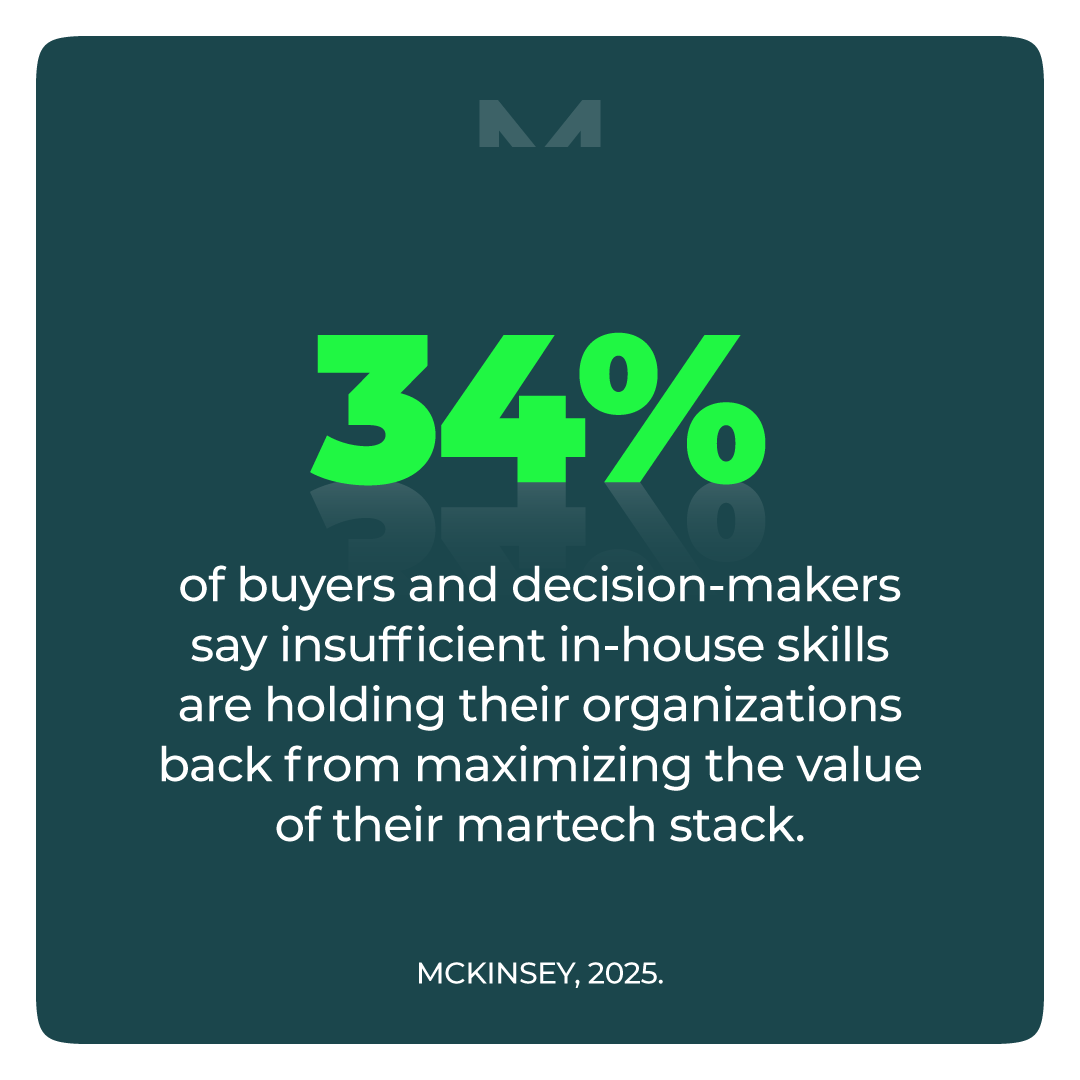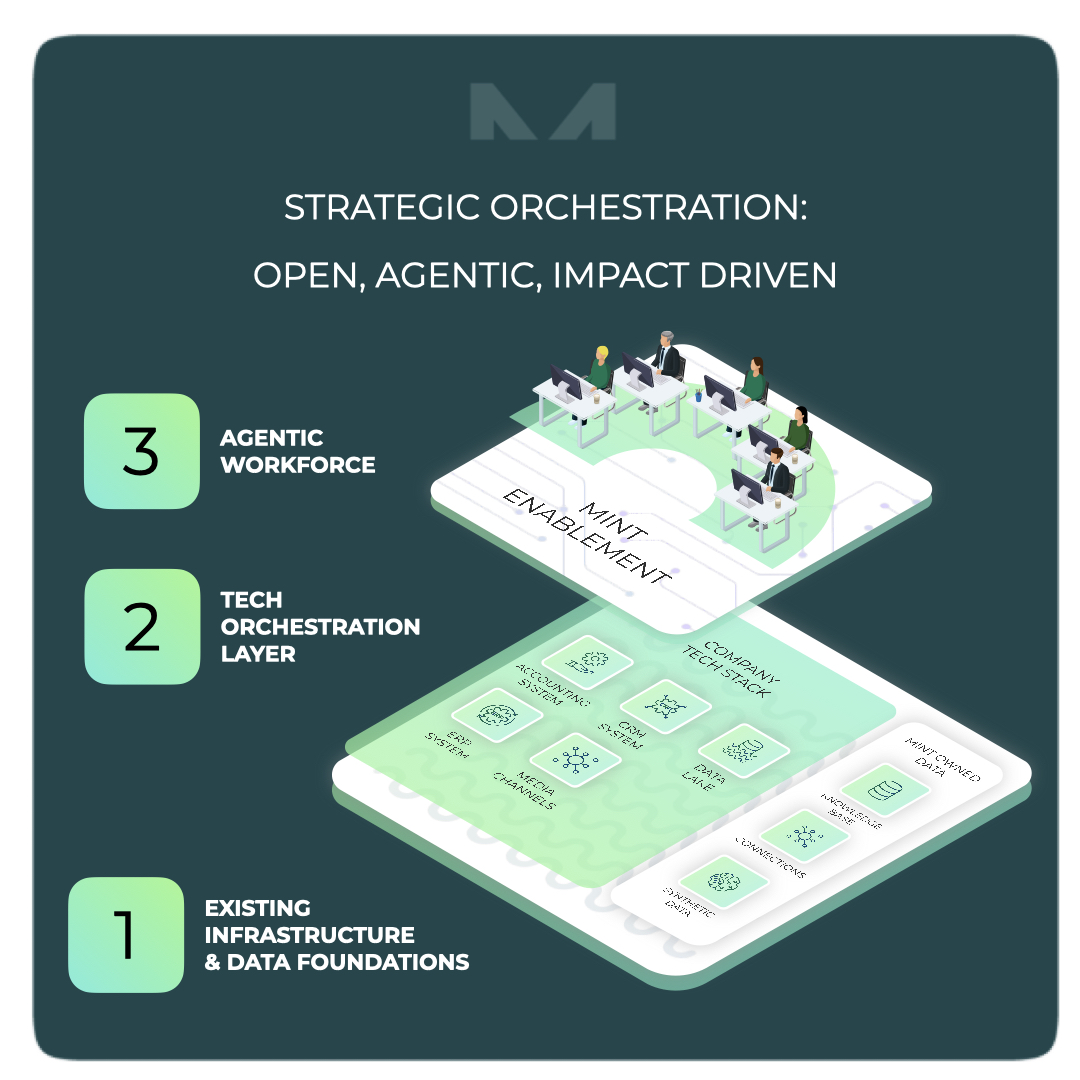Why The Martech Disconnect is Costing Brands Billions in ROI
Introduction
McKinsey’s latest report reveals that despite skyrocketing martech investments, most CMOs still struggle to prove ROI. Open platforms, AI agents, and impact-first thinking could finally close the gap.
.png)
CMOs Still can't Measure Martech ROI
Marketing leaders have invested heavily in marketing technology (“martech”) over the past decade, yet they often struggle to answer a simple question: what are all these tools actually contributing to the business? A recent McKinsey study surveyed hundreds of senior marketers and found a stark result: not one of the 50+ Fortune 500 marketing leaders interviewed could clearly articulate the return on investment (ROI) of their martech stack. Global businesses are spending $160 billion on marketing technology this year — and $215 billion by 2027, according to McKinsey. In spite of this uncertainty, over the next five years, 80% of CMOs plan to increase their martech investment, with more than a quarter expecting it to boost it by up to 25% in the next three to five years. In other words, companies keep spending on martech in hopes of growth, but no one really knows, including their leadership, if these investments are paying off.
“Frankenstein” Tech Stacks are Stifling Marketing Strategy
One culprit is tool sprawl. Years of adding the latest email platforms, personalization engines, analytics suites and more have left many companies with bloated martech stacks that operate in silos. In McKinsey’s survey, 47% of martech leaders said “stack complexity” and integration challenges are blocking them from realizing value from their tools. The martech landscape itself exploded to over 15,000 solutions by 2025. Many firms don’t even have an accurate inventory of their marketing tools – underestimating the number of different platforms in use by as much as tenfold. This fragmentation creates data and workflow disconnects: useful information is scattered, execution is clunky, and it is difficult to get a unified view of all marketing efforts. In short, stack complexity and “Frankenstein” tech stacks are stifling strategy.

Marketing Teams are Focusing on the Wrong Numbers
A second, related issue is measurement confusion. Paradoxically, digital marketing produces plenty of metrics – often too many. But businesses tend to focus on the wrong numbers. According to the McKinsey report, many marketing teams still default to vanity metrics like email sends, open rates or ad impressions delivered, rather than linking their martech efforts to strategic outcomes like incremental revenue growth, profit margin or customer lifetime value. In some cases, companies calculate ROI narrowly by looking only at software license fees and subscriptions, ignoring the much larger costs of integrating, maintaining, and staffing these systems. With an incomplete view of costs and a focus on activity-based metrics instead of business results, it’s no surprise the ROI picture stays murky.
The fallout is that many in the C-suite perceive martech as just a cost of doing business rather than a true growth driver. If the marketing team can’t demonstrate tangible business value, CFOs and CEOs understandably grow skeptical. Indeed, without evidence of ROI, martech initiatives often lack strong executive sponsorship and integration into high-level strategy. In fact, 70% of CEOs measure marketing’s impact by year-over-year revenue growth, but only 35% of CMOs prioritize that in their dashboard – a clear disconnect in defining ROI.

How the Talent Shortage is Deepening the Martech Disconnect
A third point involves people and talent development. The rapid evolution of martech has outpaced many teams’ capabilities. About 34% of organizations say under-skilled talent is a key barrier to getting value from their tech investment. Companies have invested in tools, but not equally in training people and redesigning processes. Without the right skills and change management, even advanced platforms end up underutilized. Robert Tas, a partner at McKinsey and co-author of the report, recently told Business Insider in an interview that most teams end up buying this expensive tool and then they use just 10 to 15% of its capability.
Fragmented ownership exacerbates the issue – when martech is not clearly owned by marketing leadership (often sitting in an IT budget), accountability for developing talent slips and no one focuses on maximizing these tools. The consequences are tangible: under-skilled teams resort to basic, familiar tactics, barely scratching the surface of advanced features. Many still default to batch-and-blast emails and simple A/B tests, missing out on personalization and automation opportunities

Open platforms, AI Agents & the Right Use Cases can fix the Martech Disconnect
To close the martech ROI gap, CMOs must rethink how their organizations connect tools, teams, and outcomes. Today’s bloated stacks, full of disconnected platforms, don’t need more features. They need orchestration. As the graph below illustrates, the starting point is the often-overlooked base: existing infrastructure and data foundations. From CRM and accounting systems to media channels and data lakes, most enterprises already possess the raw material. What is missing is a connective orchestration layer.
That is where an open platform approach becomes critical. A true orchestration layer — like the one depicted in the MINT ARM model — sits across the entire tech stack and integrates advertising data and media workflows end-to-end. Instead of letting systems operate in silos, this layer enables tools to “speak” to one another, removing friction and unlocking value. But integration is only the first step.
Above it, the rise of the agentic workforce: specialized AI agents trained on domain-specific tasks that offer the opportunity to scale personalization, automation, and insight generation across the marketing lifecycle. These agents don’t replace marketers; they amplify human potential, freeing teams from repetitive work and enabling more strategic, creative focus.

But none of these layers matter unless the complete setup is impact-driven. Every marketing project or campaign must start with a clear business case and end with measured outcomes. McKinsey’s research is clear: too many CMOs track activity but not impact. That must change. The combination of open integration, agentic workforce, and disciplined focus on measurable results is the real driver of enterprise transformation. It is time for marketing leaders to stop layering tools and start building systems designed not just to operate, but to grow.
Building Agentic Systems and Hybrid Teams
Amid the ROI frustration, industry analysts suggest that agentic AI could provide the spark to finally transform martech from a cost center into a true growth engine. McKinsey’s latest report calls AI a “rare chance at a do-over” for martech – essentially a second chance to realize the original promise, if companies use it to fix the underlying issues rather than compound them.
Forward-thinking CMOs are tackling this gap head-on. They are elevating new roles and skills – from dedicated marketing operations leads and data analysts to AI-literate marketers – to build teams capable of leveraging modern tech stack and in parallel building the right orchestration layer.
To nurture these capabilities, companies are launching internal academies and continuous training programs, promoting cross-functional rotations between marketing, IT, and analytics, and establishing Centers of Excellence to spread best practices. Many also supplement internal growth with targeted external hires or partners to infuse critical expertise.
Ultimately, the shift is not just technical, but cultural. CMOs who lead this transformation are reframing martech as a strategic, unified platform: open enough to integrate with anything, intelligent enough to adapt to changing market conditions, and disciplined enough to connect every initiative to measurable business value.
That is the path forward: not more tools, but open, agentic systems, built for impact.



%20MINT_642%20App%20Announcement.png)